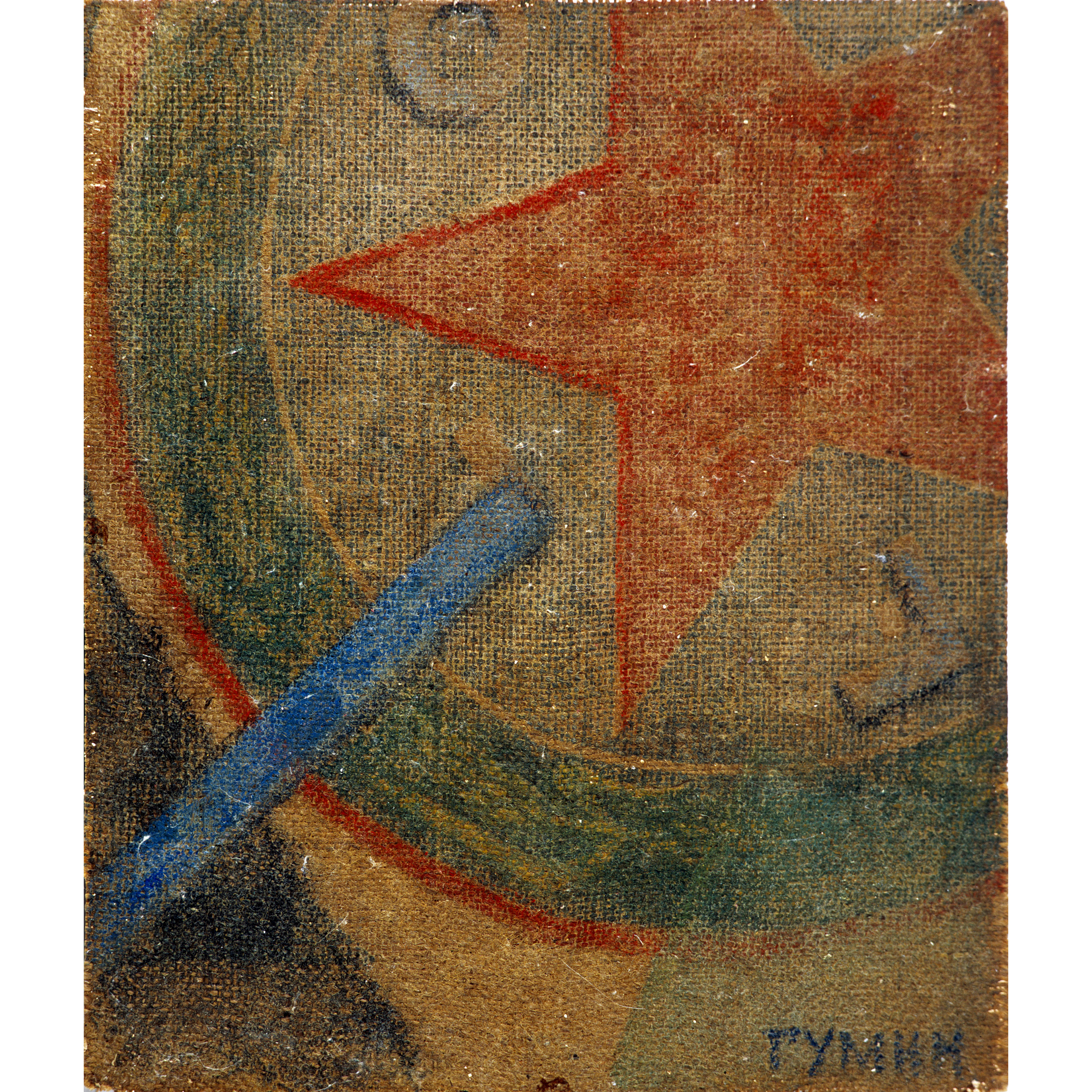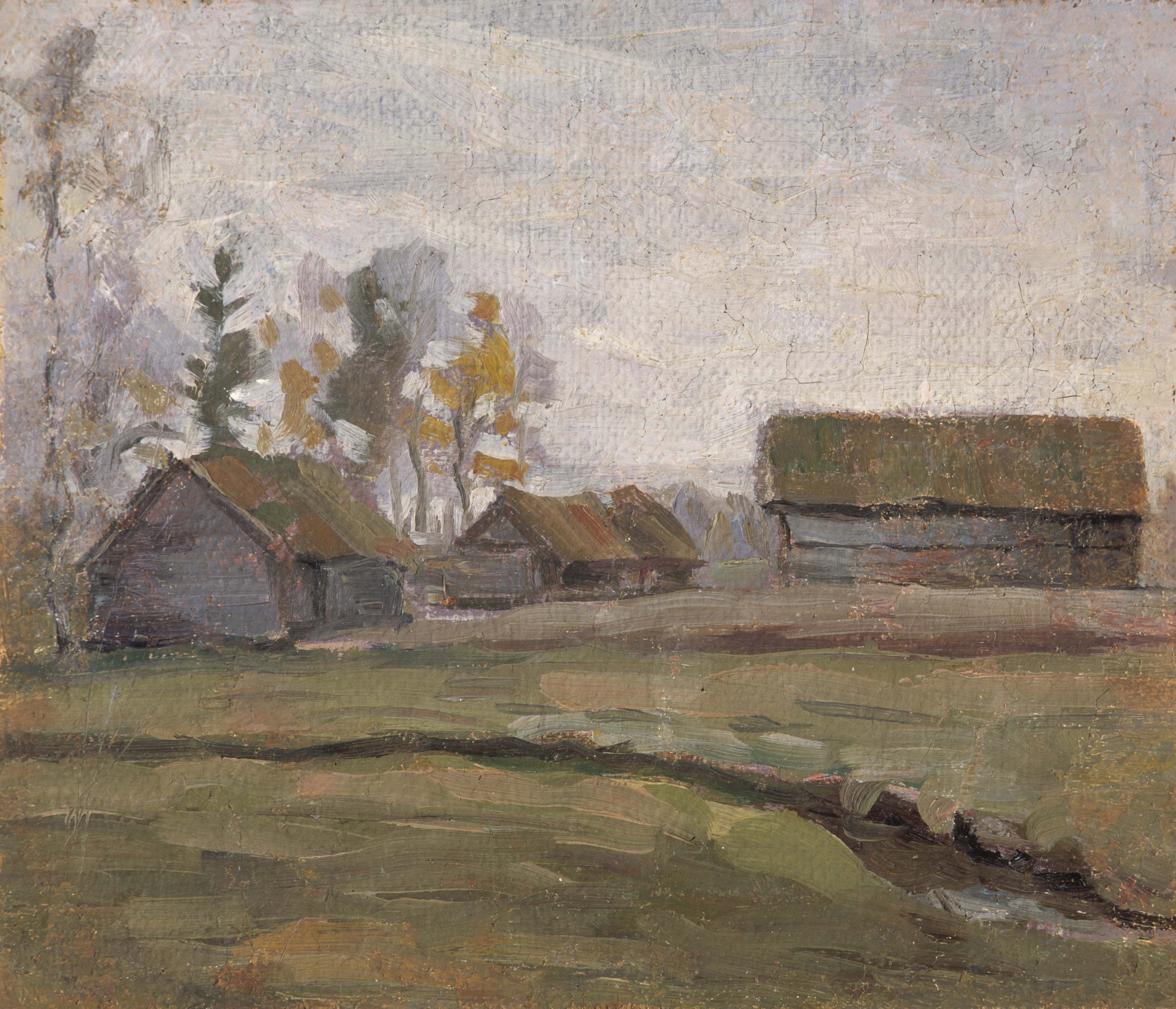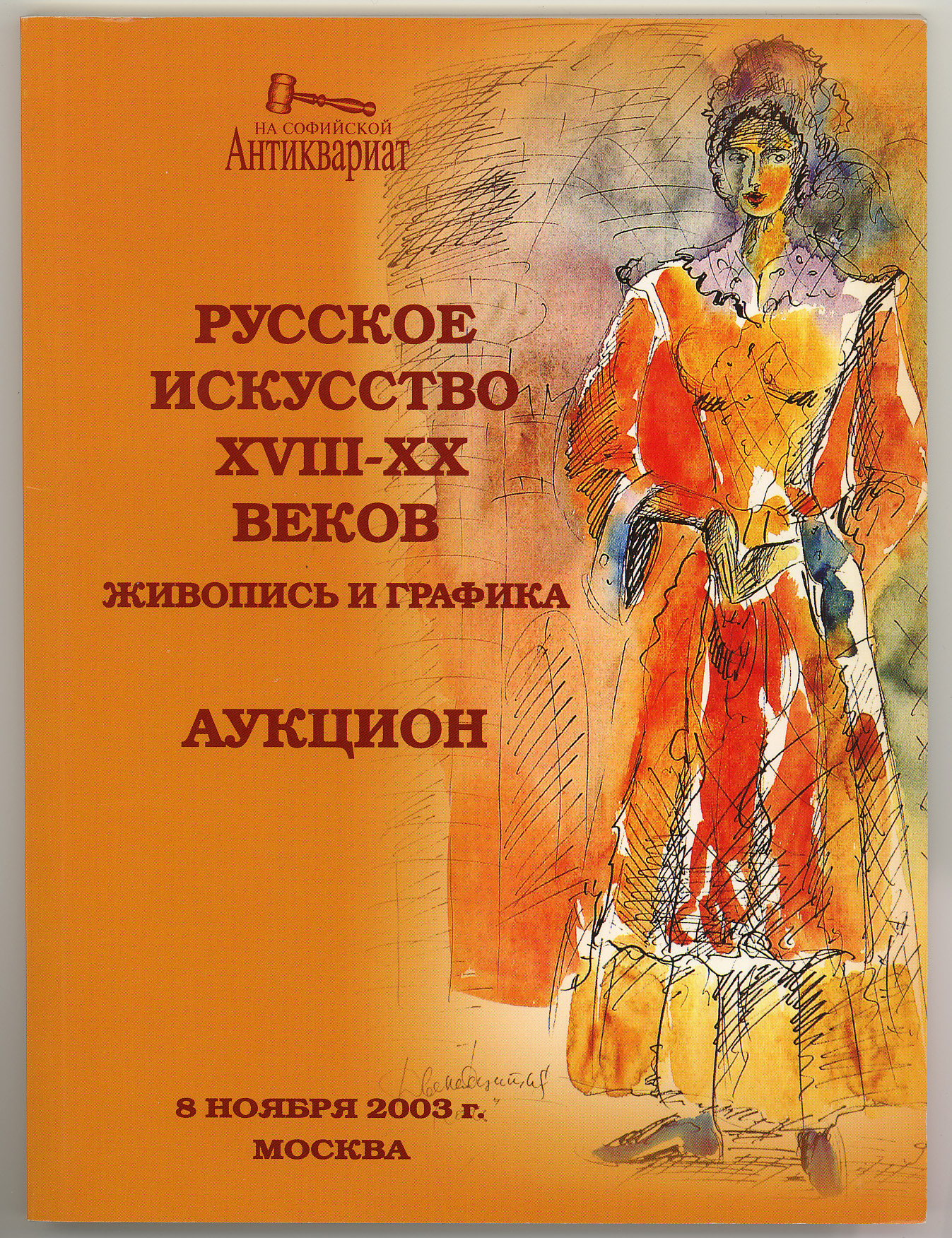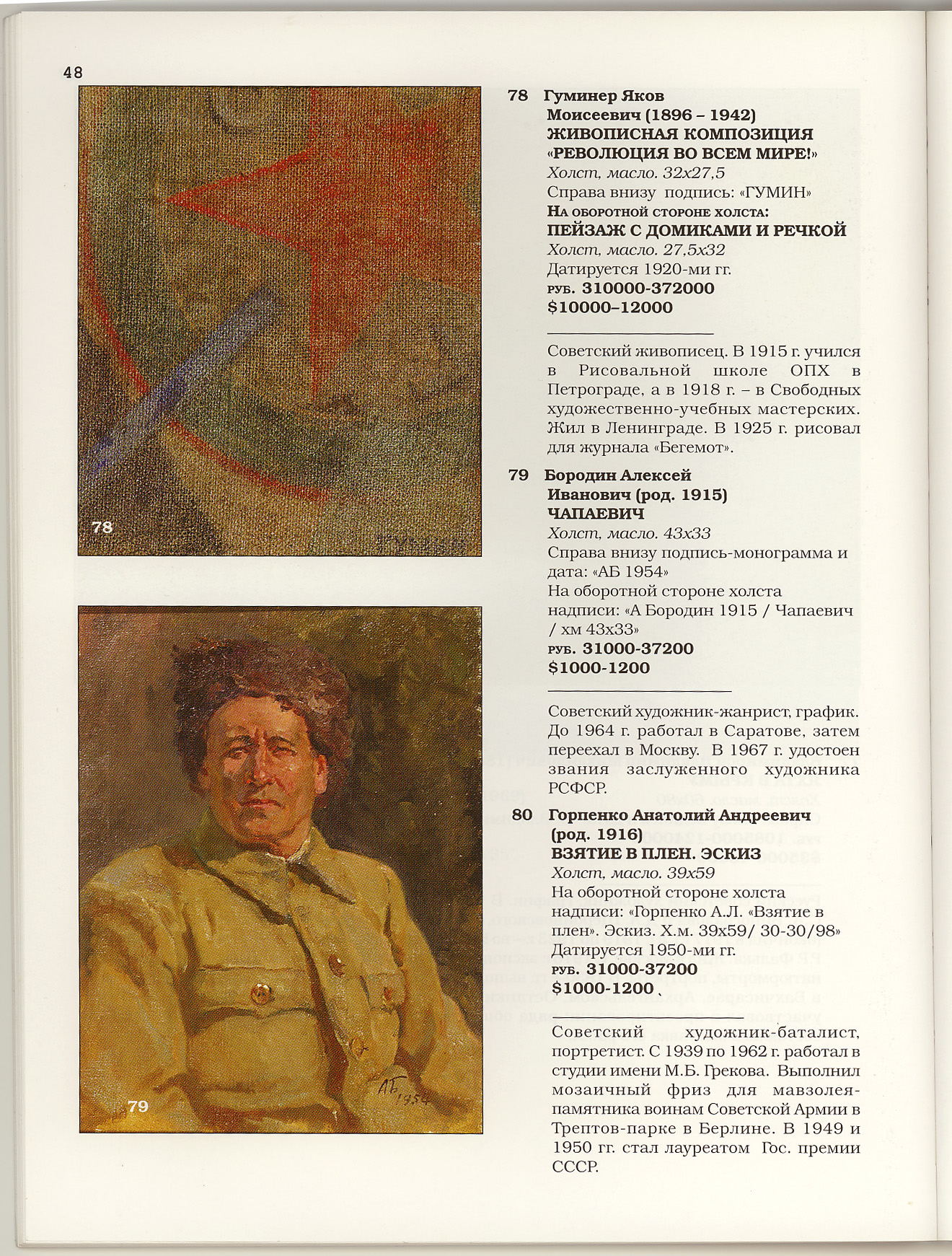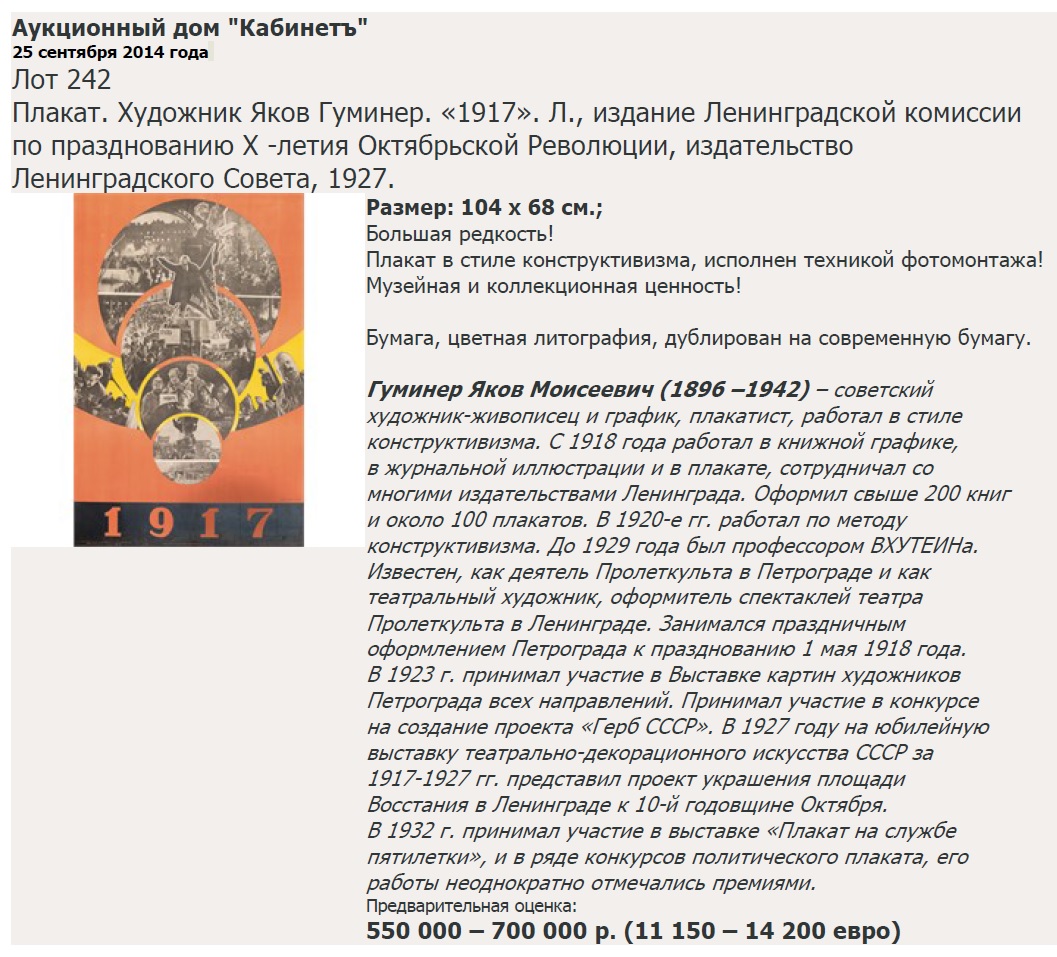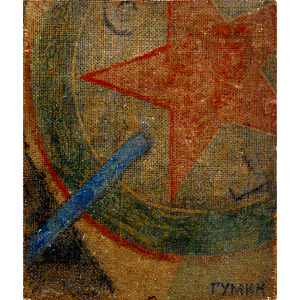Guminer Yakov Moiseevich (1896-1942)
Soviet painter and a graphic artist.
He was born in Minsk in a family of white-collar workers. His father was a doctor, and his mother was a teacher. He graduated from Realschule in Minsk. In 1915 he moved to St. Petersburg and was admitted into the Drawing School of the Society for the Encouragement of the Arts. In 1918 he started learning in St. Petersburg State Free-Art Learning Studios.
From 1916 he started to participate in exhibitions. He was a member of Creative Associations of Leningrad – The Art Association Proletcult and others. In 1918 he participated in the exhibition of modern painting and drawing. From 1918 he was engaged in book graphic, magazine illustrations, posters and worked with many publishing houses in St. Petersburg. He designed over 200 books and around 100 posters. In 1920s his work was based on constructivism.
In 1919 he was appointed head of two new art studios established by St. Petersburg State Free-Art Learning Studios: the composition art studio and art studio “Artworks of the Commune”. He was a professor at Leningrad Higher Art and Technology Institute until 1929. He is known as the leader of the Proletcult in St. Petersburg and as a theater artist who designed performances of the Proletcult Theatre in Leningrad.
He was engaged in the festive decoration of St. Petersburg for the celebration of May 1, 1918.
By the first anniversary of the October Revolution on November 7, 1918, as the main artist-decorator, he was engaged in festive decoration of Smolny. His enormous, monumental pictorial panels “Glory to the Heroes”, “Glory to the social revolution of the workers and peasants”, “The work of the world proletariat is the guarantee of the world commune” were “united by by the pathos of the revolutionary theme and they reflected the patriotic sentiments of the time”.
In 1923 he took part in the exhibition of paintings created by the artists of St. Petersburg who belonged to different art movements. He applied for the contest for the project “Emblem of the USSR”. In 1927, at the jubilee exhibition of the theatrical-decorative art in USSR, he presented the project for the decoration of the Vosstaniya Square in Leningrad (1917-1927). In 1932 he took part in the exhibition “A poster in Service of the Five-Year Plan” and in number of contests for political posters design. His works were awarded many times.
In 1930 he worked on exhibitions “Defense of the USSR”, The History of the Soviet Party of the Soviet Union (1939-1940).
From 1937 to 1941 he was the main artist of the Leningrad branch of the Central Lenin Museum. He died of starvation during the Siege of Leningrad in 1942.
